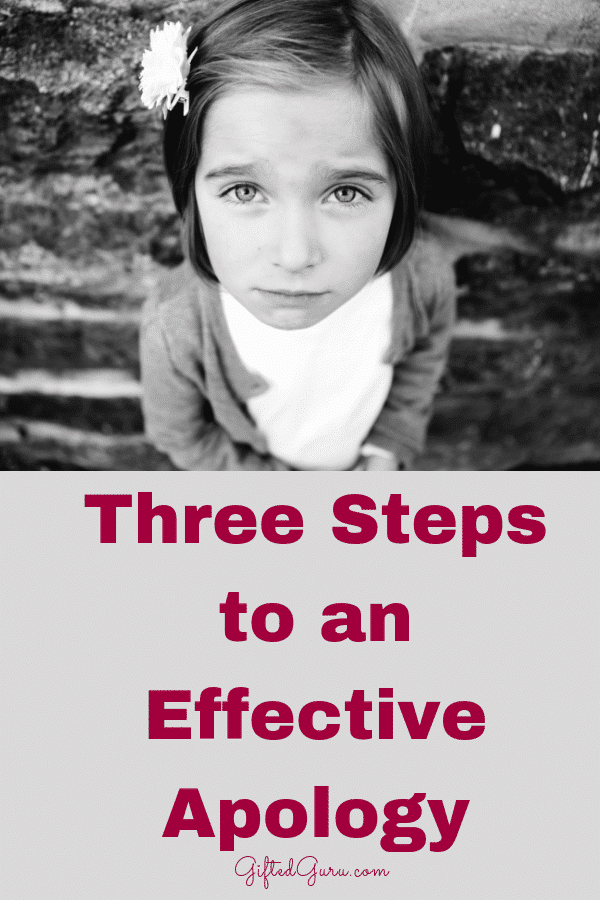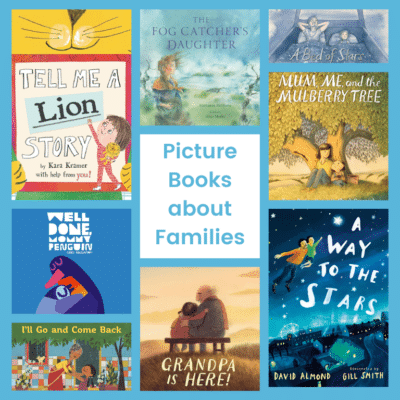As a teacher, one of the most important skills my students need to develop to have healthy relationships with their peers is to learn how to offer an apology.
A mumbled, “Sorry” with the head down and the toe of the shoe scuffing the floor is not what I mean.
A facetious, forced, blithe, “Sorry,” won’t cut it.
There are three steps to an effective apology that benefit both parties. It’s a simple process, and it can be taught to even fairly young children.
I adapted it from what I learned about effective praise, and I’ve found it equally important and valuable in growing humans.
The First Step
The first step in an effective apology is for the student who is apologizing to say the name of the person to whom he/she is apologizing. If I need to apologize to Sarah, I should say, “Sarah” at the beginning of the apology.
I should wait for Sarah to look at me and then continue.
When a student needs to apologize to a group, some form of group address is needed. “Class” or “Friends” or “3rd Grade” or “2nd Period” or some other similar address will work just fine.
The Second Step
The second step is to state specifically what is being apologized for. Just “sorry” is pretty shallow. Consider how much more sincere it sounds when the specific behavior is acknowledged.
“I would like to apologize (or ‘I am sorry’) for hitting you with my pencil…throwing your ball across the playground…cheating off of your paper…calling you a mean name…talking about you behind your back…lying to you…fill in egregious behavior here…”
This is hard to do, but essential.
Surprisingly often, there is a disconnect between what one person is upset about and what the other person thinks they did.
I’ve seen it more than once when someone apologizes and the other person says, “That didn’t bother me. What I was actually upset about was…”
The Third Step
The third step is to suggest a way in which that behavior could have hurt or negatively affected the person and ask for forgiveness.
“I imagine that it was frustrating…made you feel lonely…hurt your feelings…made you think I don’t like you…made it hard to concentrate on your work…made you feel betrayed/angry/etc. Please forgive me.”
It’s not essential that they guess this correctly. What is essential is that they attempt to identify the possible consequences of the behavior on the other person.
This is one way to build empathy.
You’re far less likely to repeat hurtful behavior if you are reflecting on the impact that behavior had on the other person or group of people.
Most of my students have needed help with this. To be honest, most adults need help with this.
The Role of Restitution
If restoration is possible, it should be offered in this step. See the examples below for what I mean.
I’ve heard apologies like these:
“Keenan, I’m very sorry that I took your cookies from your lunch. It probably made you feel sad that you didn’t get cookies and scared about telling your dad you didn’t eat the cookies he gave you. I will bring you cookies tomorrow, even though I know it won’t be the same.”
“DaQwan, I apologize for tapping my pencil, even when you asked me not to. I would guess it made you feel frustrated and like I didn’t have respect for you and got in the way of your work. I won’t do it again.”
“8th Period, I’m sorry I made a scene when I came in tardy and disrupted the whole class. I probably made some of you lose focus on your work and interfered with your projects. I can’t make up for it, but I hope you will forgive me.”
“5th grade, I feel badly that I threw the desk yesterday. I probably scared people and interrupted your work. I won’t do it again, and I will do all of the classroom chores today to make up for it a little bit.”
This method builds skills, and it builds a safe classroom where students know that if they make a mistake, there is a path back.
It may seem harsh to have a child apologize in front of the class, yet in reality, most people know they’ve done something wrong and want the opportunity to feel brought back into the fold.
It’s not like the other kids forgot that the kid threw a desk. Hel-lo.
The initial behavior was engaged in in front of the class, and it makes sense that the closure will be class-wide as well.
If a child is nervous about it, you can let them record the apology and play the recording of it.
Over time, it becomes a part of the daily classroom life, and it is not intimidating. It is a cycle of forgiveness.
Students are human and will make mistakes. As educators, we need to teach them how to handle those mistakes.
One Key Idea: Teachers Count, Too
It’s important for teachers to model this as well. Here are apologies my students have heard from me:
“Class, I’m sorry I didn’t get your work returned in a timely fashion. I know some of you worked really hard to make the deadline, and it must have felt like I didn’t care about your time. I am going to give everyone a late work pass to use in the future as a way to try to make it up to you, and I promise to return work more quickly in the future.”
“Shane, I’m really sorry that I used a short tone of voice with you when you asked me a question. It probably made you feel like I didn’t care about your question or didn’t have time for you. That is not how I feel, and I hope you will forgive me.”
“Hey, 3rd Grade, I am sorry that I brought you off of the playground too early yesterday. The fire drill got my schedule messed up, and I didn’t pay close enough attention to the adjusted time. I’m guessing that I interrupted some games and fun. I have worked it out with the 2nd grade that we can stay out for seven extra minutes today to try to make it up to you. I hope you will forgive me.”
When students see the teacher apologizing, they know it’s not about power or control or embarrassment. It’s about recognizing what we’ve done and trying to fix it as best we can. It’s a life skill we all need.
What if a Student Doesn’t Want to Apologize?
Refusal to apologize happens for one of two core reasons:
- a refusal to accept responsibility for one’s actions, or
- a belief that we don’t actually have anything to apologize for/ someone else owes us an apology more than we owe them one
The first is a discipline issue. Refusal to accept responsibility for one’s actions is a core value, and it’s worth dying on that hill.
You may choose to accept written apologies at first, if a student is concerned about the person’s reception of the apology, but an outright refusal is unacceptable and will be disciplined according to my regular discipline policy.
If the second reason is at play, I do my best to make a decision on how to proceed. Part of my job as an adult is to help the student see how he/she went wrong or has inaccurate thinking about a situation.
Often, apologies need to be exchanged. Literally draw straws to see who goes first, with the winner being the one who gets to go first.
What if It’s Faked?
I’ve heard people argue that you shouldn’t make kids apologize because it’s not sincere.
I don’t buy that argument.
We teach kids real feelings through behavior, from the time we try to coax a “thank you” out of a toddler.
With apologies, you fake it ’till you make it.
Often, you will find that in the act of apologizing, the feelings come.
Receiving an Apology
Kids must be taught how to receive an apology, as well. Here’s what I tell kids:
- Look at the person.
- Keep a gentle smile or neutral facial expression.
- Keep your arms loosely at your sides (instead of folded across your chest).
- When the apology is over, say, “Thank you” or “I forgive you” or “I appreciate your apology” or “I accept your apology” or other similar statement. There are ways to accept an apology without sending the message that it made the whole incident evaporate.
- If you are having trouble accepting the apology or doubt its sincerity, try to think of a time you needed forgiveness and try to act the way you would want someone to act towards you in the situation.
- Remind them that often the people hardest to forgive are most in need of our forgiveness.
Wrapping it Up
While it may seem that teaching children how to make an effective apology should be something parents should do (and I don’t disagree), the fact is that quality apologies make classrooms run better, much better, and children are happier, much happier.
Of course, if you want to try this at home, that’s fine, too.
You May Also Like:
- Supporting Overly Emotional Children with Peer Interaction
- Interacting with Defiant Students
- Adaptive Giftedness & the Power of Connection






